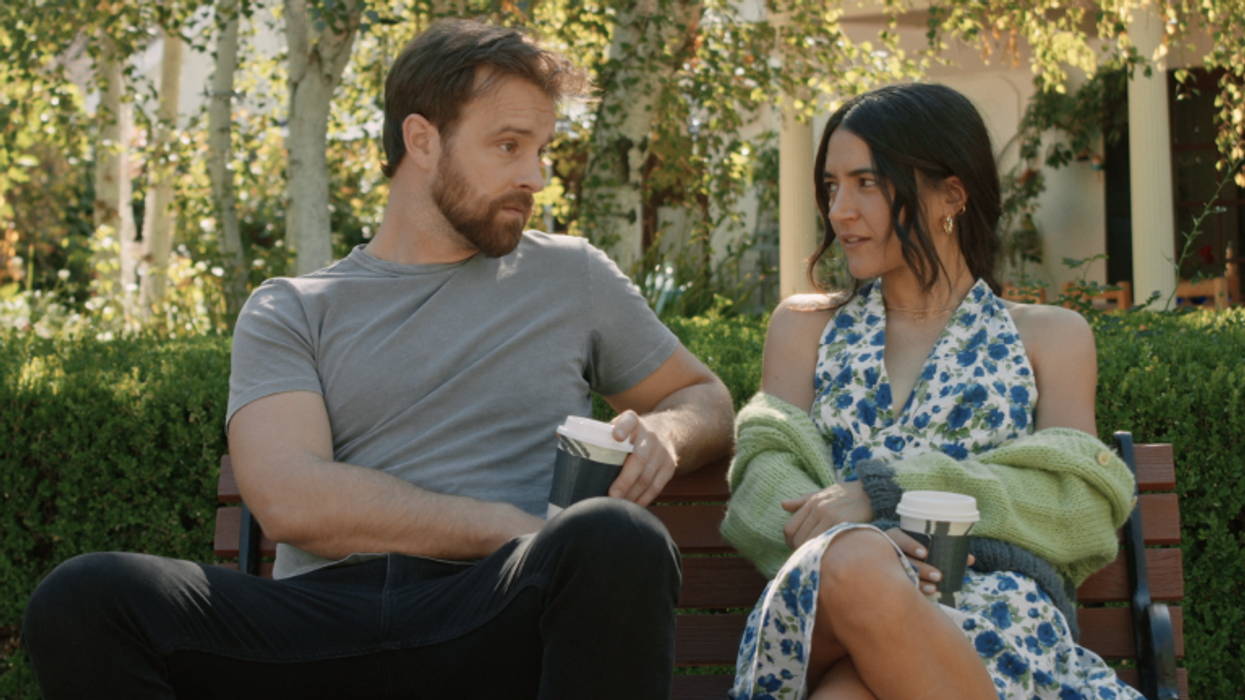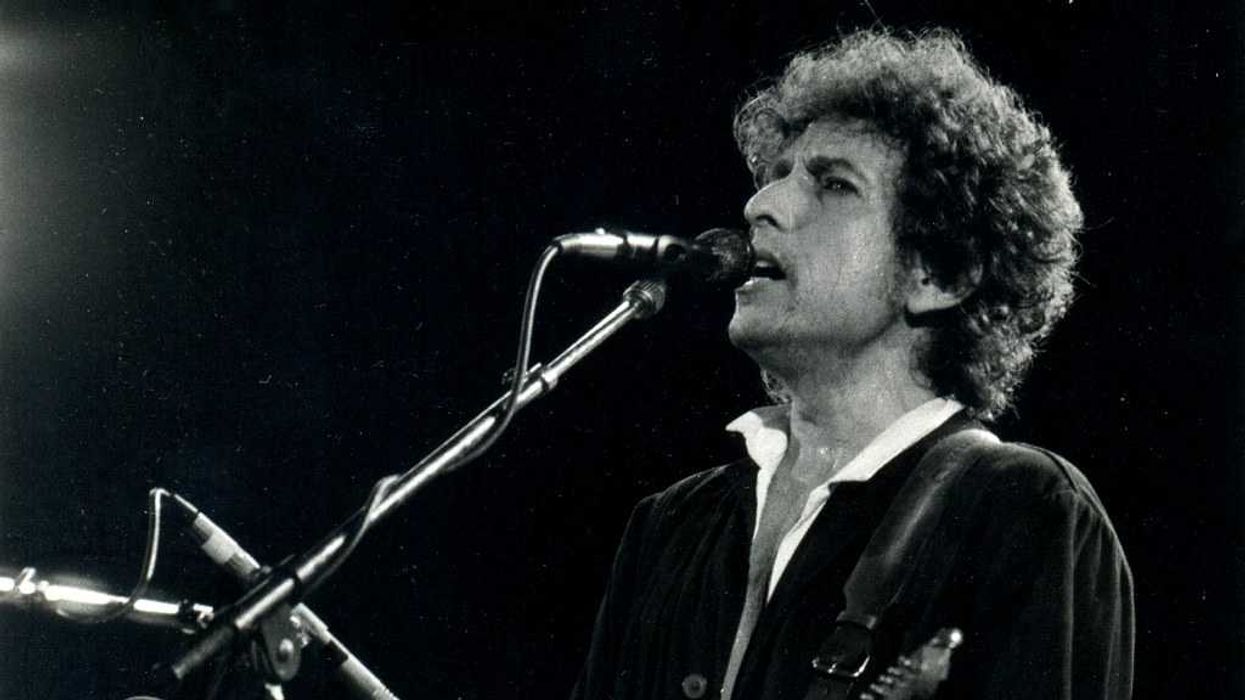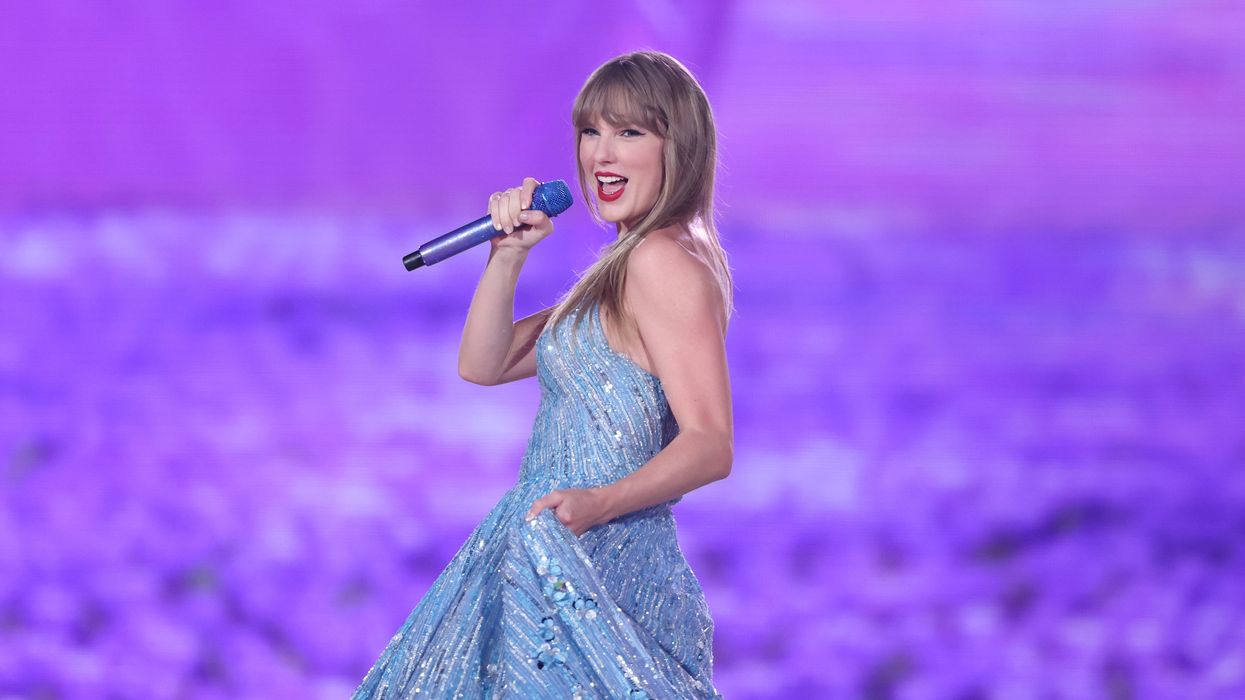Discerning how to connect with people who hold political views in opposition to our own is one of the Gordian knots of our time. This seemingly insurmountable predicament, centered in the new film The Elephant in the Room, hits close to home for all of us in the broad mainline Protestant family. We often get labeled “progressive Christians” — but 57% of White non-evangelical Protestants report voting for Donald Trump. So this is something we can’t just ignore, no matter how uncomfortable it is.
While the topic seems like a natural fit for a drama, writer and director Erik Bork (Emmy-winning writer and supervising producer of Band of Brothers) had the novel idea to bake it into a romantic comedy. And as strange as it might sound, it works. Set during the early days of COVID-19, the movie stars Alyssa Limperis (What We Do in the Shadows), Dominic Burgess (The Good Place), and Sean Kleier (Ant-Man and the Wasp).
“During the chaos of the 2020 election and the isolation of the pandemic, I needed a reason to laugh to keep from crying, so I wrote one,” said Bork. “This story reflects something I think many of us wrestle with: Can decent people who see the world differently still find compatibility and respect for one another — and laugh along the way?”
The plot centers around Leah, an outgoing and athletic social media strategist, and her new housemate Martin, an introverted doctoral candidate who struggles with body positivity. They come to bond over past relationship troubles despite having amusingly different personalities. Then on Christmas, a man named Vincent delivers some food to their place from the restaurant where he works as a line cook and immediately hits it off with Leah. But, as you might have guessed, things get complicated when it becomes clear during their first date that she leans left and he leans right.
The film overcomes cliches by making each of these characters fully-realized and specific people, not political avatars. After all, people are even more complicated than politics. And if you still find yourself uneasy about the premise, it is clear from the jump that the film is not going to try to apologize for any of Trump’s actions in search of a “middle ground.” What kind of Trump supporter Vincent is matters. He is not a Christian Nationalist, storm-the-Capitol, MAGA conservative.
It is clear that a great amount of effort went into how to thoughtfully approach politics throughout the project. The film was made possible through the collaboration between organizations committed to reducing ideological division in American life, including Bridge Entertainment Labs, Civic Health Project, Common Pictures, and Listen First Project. All of this proves fruitful and allows for a healthy balance between insightful political commentary and the joys of a traditional romantic comedy.
In a movie elevated by excellent chemistry and performances, Martin (played by Burgess) almost steals the whole show. His deadpan reactions to Leah’s effervescent personality yield the biggest laughs. And he even gives us a fun subversion of the gay best friend rom-com trope, telling Leah when she wants help setting up her dating profile, “I’m not that kind of gay. … I’m not sassy and I won’t call you ‘girlfriend’ and you do not wanna take fashion advice from me.”
The Elephant in the Room doesn’t try to provide answers about how to solve all of our current political problems. That would be too much for any film to accomplish. But what it does do is show that the key to productive disagreements is having all sides approach them through good faith. Of course, that won’t always be the situation. But when it is, just maybe some healthy relationships between very different people can begin to flourish.
- YouTube youtu.be
Jeremy Fuzy is the digital editor at Word&Way. You can find him on Bluesky here.























